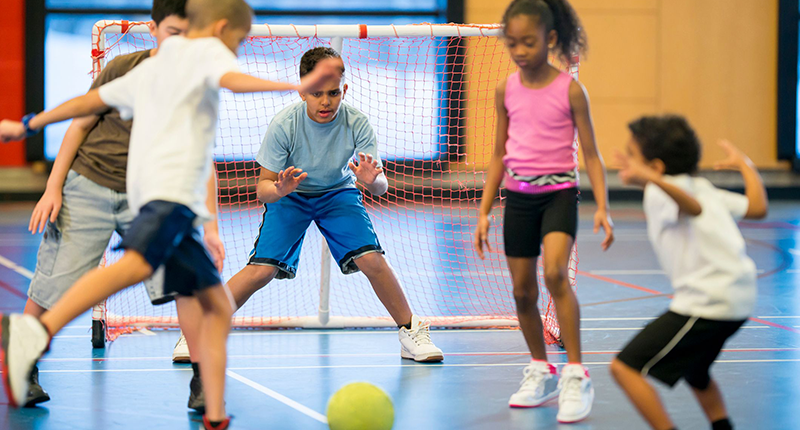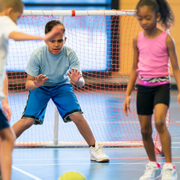Investigating Motor Competencies in Elementary-School Aged Children

Research By Beatrix Algurén, Yiling Tang, Chelsea Pelletier, P-J Naylor, and Guy Faulkner
Article Provided by Sport for Life
The early years of childhood are foundational for developing essential motor competencies (MCs). But what factors shape these skills? A recent study conducted by researchers Beatrix Algurén, Yiling Tang, Chelsea Pelletier, P-J Naylor, and Guy Faulkner seeks to uncover the combined impact of parenting, school grounds quality, children’s movement behaviour, and self-confidence on the motor competencies of elementary-school-aged children.
Background and Methodology
This study forms part of a three-year longitudinal cohort research project called Physical Literacy for Communities (PL4C), an initiative by Sport for Life. Based in the West Vancouver school district, this cross-sectional sub-study assessed 319 children, including 166 boys, 147 girls, and 6 non-binary children with an average age of 7.5 years. The research team utilized the Physical Literacy Assessment for Youth (PLAY) Fun tool to evaluate children’s motor competencies across five domains: running, locomotor skills, upper and lower body control, and balance.
To measure children’s movement behaviour objectively, the team monitored their physical activity levels using wrist-worn accelerometers (Actigraph GT3X+BT). Parents completed surveys detailing their children’s outdoor playtime, sports participation, and involvement in instructor-led physical activities. The surveys also included the Activity Support Scale for Multiple Groups (ACTS-MG) to gauge the level of parental support for physical activity.
Furthermore, the quality of school grounds was assessed using the Sport, Physical Activity and Eating Behavior: Environmental Determinants in Young People (SPEEDY) school grounds audit tool. This tool evaluates six components: cycling provision, walking provision, sports and play facilities, other facilities, school grounds design, and aesthetics.
Key Findings
The majority of children were at the emerging level (79%) for overall motor competency, while one-fifth were at a competent level. On average, children accumulated about 111 minutes of moderate-to-vigorous physical activity (MVPA) per day (113 minutes/day for boys, 109 minutes/day for girls). Notably, children with competent-level motor competencies had 15 minutes/day more MVPA than those at the emerging level.
The study found that parenting support, particularly logistical support, had a significant positive impact on children’s motor competencies. For instance, the logistics aspect of parental support positively influenced motor competencies for both boys and girls (g = 0.267, p = 0.004 for boys and g = 0.247, p = 0.011 for girls).
School grounds quality also played a crucial role in influencing motor competencies, though its effects varied across genders. The research suggests that different qualities of school grounds enhance motor competencies for boys and girls in different ways.
Practical Tips Based on Research Findings
- For Parents: Encourage Advanced Participation in Sport and Instructor-Led Activities:
- Network and Collaborate: Seek opportunities to collaborate with local sports clubs and community centers to co-create events that cater to a broader range of interests and abilities, enhancing community
- Advocate for Inclusive Programs: Push for the development of inclusive programs that accommodate all children, regardless of their physical abilities, ensuring everyone has the opportunity to participate and develop skills.
- For Schools: Elevate School Grounds Quality:
- Innovative Design: Adopt designs that incorporate natural elements and varied terrain, which not only make the playground more engaging but also challenge students physically and mentally.
- Interactive and Adaptive Play Equipment: Install adaptive play equipment that can be adjusted for different age groups and skill levels, encouraging progressive skill development among students.
- For Schools: Incorporate Comprehensive Physical Activity into the Curriculum:
- Curriculum Integration: Find ways to connect physical activities with academic lessons, enhancing the overall learning experience through physical engagement.
- Professional Development for Teachers: Provide ongoing workshops and training for teachers on the latest advancements in physical education and effective ways to integrate dynamic physical activities into the curriculum.
- For Parents and Schools: Promote Structured and Unstructured Play:
- Structured Play Innovation: For parents, organize playdates that include problem-solving games and team For schools, incorporate these kinds of activities into regular school hours to enhance cognitive and motor skills.
- Enhanced Outdoor Initiatives: Parents can explore local parks and nature trails with their children, while schools can organize regular field trips to such locations to provide diverse and enriching outdoor experiences.
- For Parents: Deepen Engagement in Physical Literacy:
- Workshops and Seminars: Participate in workshops that explain the importance of physical literacy in child development and offer practical ways to weave physical activity into daily family routines.
- Community Engagement Programs: Get involved in or initiate community programs that promote active lifestyles and physical literacy, enhancing the communal support network for developing motor competencies.
Conclusion
The study clearly demonstrates that motor competencies in children are shaped by a combination of parenting support, school environment, and participation in daily physical activities. Parents and schools play a crucial role in this process by fostering a supportive environment that encourages movement.
Parents can help improve their children’s motor skills by encouraging participation in sport and providing logistical support. Schools should consider the design and quality of their outdoor spaces, as they can differently enhance motor competencies for boys and girls.
Moreover, schools should strive to integrate more movement-based activities into the curriculum while parents foster unstructured outdoor playtime. By creating an environment where children can thrive through active play and guided instruction, we can collectively enhance motor competencies and support overall childhood development.

